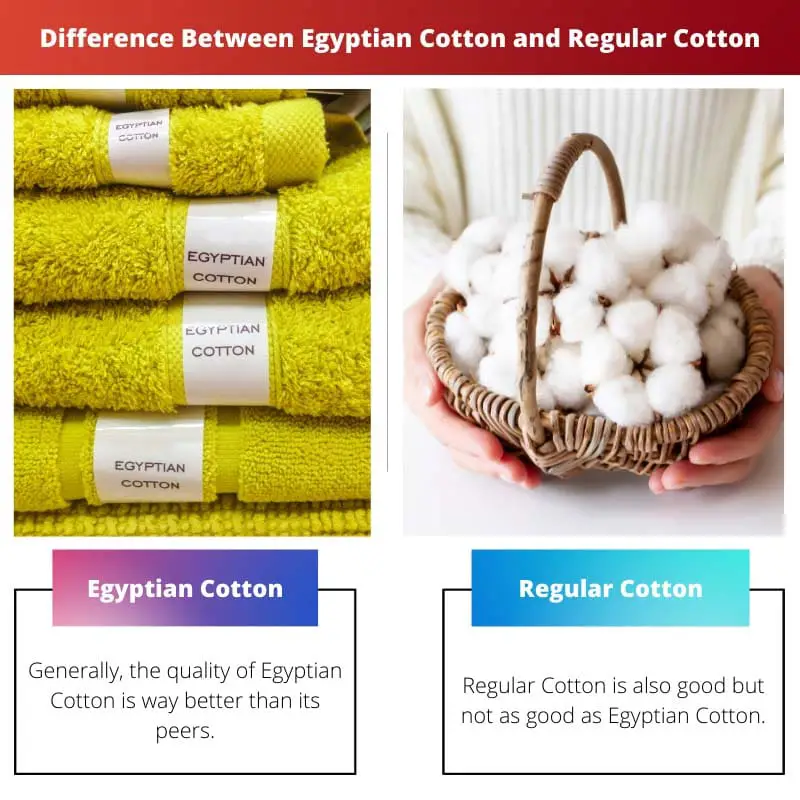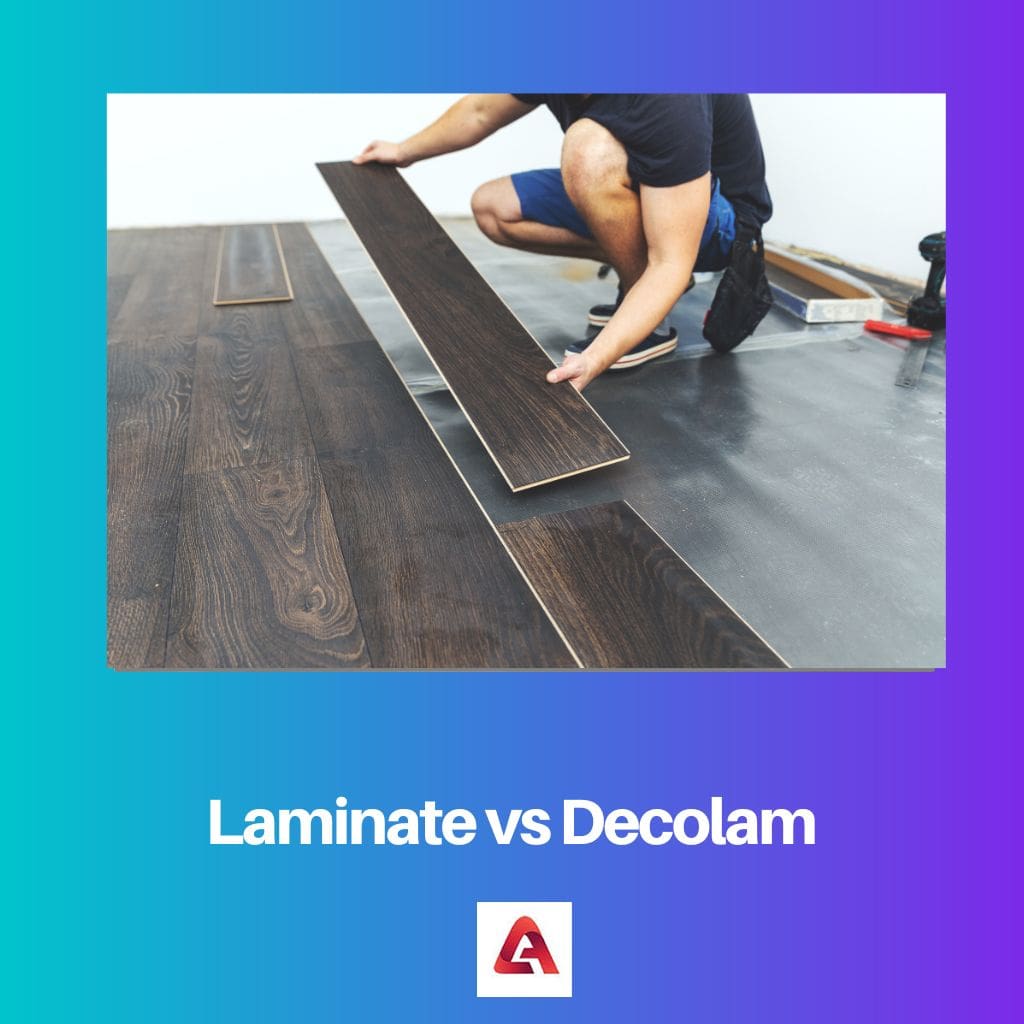When it pertains to textiles, people always go for cotton-based materials. They don’t like anything that isn’t made of cotton. Also, people frequently disregard it.
Cotton-based products have a pleasant feel to them. Nonetheless, there will be cotton varieties with superior properties. Egyptian cotton and ordinary cotton are two of the most widely contrasted varieties of cotton.
Key Takeaways
- Egyptian cotton is grown in Egypt and is known for its long and strong fibers, while regular cotton is grown in many countries worldwide.
- Egyptian cotton is softer, more durable, and has a higher thread count than regular cotton.
- Egyptian cotton is more expensive than regular cotton due to its quality and scarcity.
Egyptian Cotton vs Regular Cotton
The difference between Egyptian Cotton and Regular Cotton is that the fiber’s composition distinguishes Egyptian cotton from normal cotton. The Egyptian cotton strand is robust and unbreakable, resulting in a versatile fabric. This implies that Egyptian cotton fabrics are incredibly soft and could last considerably longer than conventional cotton beddings.

The term ‘Egyptian’ cotton relates to the source of the vegetation used to produce cotton. Egypt’s cotton plants develop in a peculiar environment that produces ideal growing circumstances, resulting in superfine and lengthy yarn.
Cotton with fewer and coarser fibers is known as regular cotton. Because the fibers are small, the yarn has a lot of splitters.
As a result, once weaved into a garment, the yarn may not be as pleasant as Egyptian cotton. Furthermore, the coarse quality of the cloth makes normal cotton less resilient.
Comparison Table
| Parameters of Comparison | Egyptian Cotton | Regular Cotton |
|---|---|---|
| Quality | Generally, the quality of Egyptian Cotton is way better than its peers. | On the other hand, the quality of Regular Cotton is also good but not as good as Egyptian Cotton. |
| Fiber Length | Egyptian cotton fibers are longer and finer, making them better for day-to-day usage. | Whereas in the case of Regular cotton, fibers are smaller and rougher. It also relies on how well the maker built the cotton. |
| Silkiness | Egyptian Cotton is way more silkier than other cotton prospects. | On the other hand, Regular Cotton lies on a lesser silky side. |
| Durability and Stiffness | Egyptian cotton seems to be more durable and stiffer than regular cotton in terms of quality and rigidity. Realizing that Egyptian cotton is preferable to regular cotton somehow doesn’t imply that almost all Egyptian cotton goods are of good quality. | Whereas, Regular Cotton is not as stiff as Egyptian Cotton. |
| Cost | Egyptian cotton costs much more than regular cotton. | On the other hand, Regular Cotton lies on the less costly side. |
What is Egyptian Cotton?
The term ‘Egyptian’ cotton relates to the source of the vegetation used to produce cotton. Egypt’s cotton plants develop in a peculiar environment that produces ideal growing circumstances, resulting in superfine and lengthy yarn.
For several years, Egyptian cotton has been universally considered the softest and most durable. If the cotton utilized does not come from such an Egyptian plant, it cannot be called ‘Egyptian’ cotton.
This cotton is truly hand-picked to assure the greatest degree of precision. Hand-picking cotton preserves its integrity and relieves tension on the fibers.
It guarantees that the cotton is as delicate and fine as possible. Hand-picking cotton also makes the cotton stay longer. It’s no surprise that Egyptian cotton is regarded as a luxury fiber.
Hand-picked cotton is derived from that very same plant as Pima Cotton.
Cotton fibers are spinning into long strands before even being woven into the fabric and are manufactured in Egypt. Egyptian Cotton does have a very high thread count every square inch since the strands are very fine.

What is Regular Cotton?
Cotton with fewer and coarser fibers is known as regular cotton. Because the fibers are small, the yarn has a lot of splitters. As a result, once weaved into a garment, the yarn may not be as pleasant as Egyptian cotton.
Furthermore, the coarse quality of the cloth makes normal cotton less resilient.
Regular cotton is indeed not permeable either. Nevertheless, ordinary cotton has one significant benefit. It is less expensive. As a result, normal cotton sheets are affordable to anybody.
Whereas most people believe that regular fabric is not a suitable choice for bed sheets since it is not as pleasant, a small group of people enjoy the sharp sensation that regular cotton provides.
Regular cotton farmed commercially has shorter strands that are frequently damaged even during harvesting operation, leading to decreased, thick, prickly cotton, which does not feel nice! Clothing is more than simply a covering—it’s a sensation, and Pima cotton provides ease, silkiness, and elegance.

Main Differences Between Egyptian Cotton and Regular Cotton
- Generally, the quality of Egyptian Cotton is way better than its peers. On the other hand, the quality of Regular Cotton is also good but not as good as Egyptian Cotton.
- Egyptian cotton fibers are longer and finer, making them better for day-to-day usage. Whereas, in the case of Regular cotton, fibers are smaller and rougher. It also relies on how well the maker built the cotton.
- Egyptian Cotton is way silkier than other cotton prospects. On the other hand, Regular Cotton lies on a lesser silky side. But it solely depends on the user for their choice of ideal cotton that they would love to use.
- Egyptian cotton seems to be more durable and stiffer than regular cotton in terms of quality and rigidity. Whereas, Regular Cotton is not as stiff as Egyptian Cotton. Realizing that Egyptian cotton is preferable to regular cotton somehow doesn’t imply that almost all Egyptian cotton goods are of good quality.
- Egyptian cotton costs much more than regular cotton. On the other hand, Regular Cotton lies on the less costly side.





